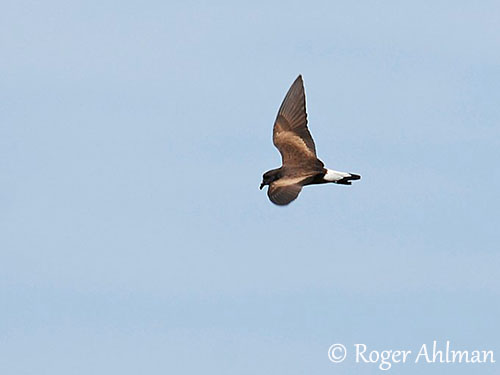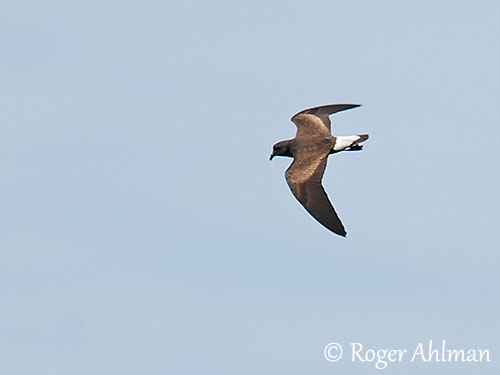
Fr: Océanite téthys
All: Galapagoswellenläufer
Esp: Paíño de las Galápagos - Paíño Danzarín
Ita: Uccello delle tempeste delle Galapagos
Nd: Galápagosstormvogeltje
Sd: Vitgumpad stormsvala
Photographers:
Roger Ahlman
Pbase Galleries Peru and Ecuador
Didier Buysse
Vision d’Oiseaux
Text by Nicole Bouglouan
Sources:
HANDBOOK OF THE BIRDS OF THE WORLD vol 1 by Josep del Hoyo-Andrew Elliot-Jordi Sargatal - Lynx Edicions - ISBN: 8487334105
BirdLife International (BirdLife International)
CREAGUS@Monterey Bay (Don Roberson)
What Bird-The ultimate Bird Guide (Mitchell Waite)
Wedge-rumped Storm Petrel
Hydrobates tethys
Procellariiformes Order – Hydrobatidae Family
INTRODUCTION:
The Wedge-rumped Storm Petrel is a tiny bird of the South American islands. This pelagic species comes to land only for breeding.
This species was first described by the French naturalist Charles Napoleon, in 1852.
DESCRIPTION OF THE BIRD:
Biometrics:
Length: 18-20 cm
Wingspan: 34-38 cm
Weight: 23 g
The adult has sooty-black head and upperparts (browner in worn plumage). A dull buffy central diagonal panel formed by greater coverts and tips of median coverts, is visible on the upperwing and appears very conspicuous in flight. Rump and uppertail-coverts are white, and form a patch well visible in flight too. This white patch almost reaches the notch of the sooty-black tail.
The underparts are sooty-black, including the underwing, except the white rump sides extending down to the rear underparts.
The bill is black. The eyes are dark brown. Legs and webbed feet are black.
Both sexes are similar and the juvenile resembles adults.

SUBSPECIES AND RANGE:
There are two subspecies.
O.t. téthys (here described and displayed) breeds on Galapagos Islands.
O.t. kelsalli occurs on Pescadores and San Gallán Islands, off W Peru. This one is smaller than nominate.
HABITAT:
The Wedge-rumped Storm Petrel is marine and pelagic. It is usually found far from the coasts, except during the breeding season.
It breeds on coastal cliffs, but also on lava fields on remote islands, and on offshore rocks.
During winter, this species may occasionally wander off the coast of central California.
CALLS ANS SONGS:
The Wedge-rumped Storm Petrel is silent at sea, but they utter soft growing calls on the breeding grounds. They can be extremely vocal on land, giving harsh, guttural sounds, whistles and peeping notes.
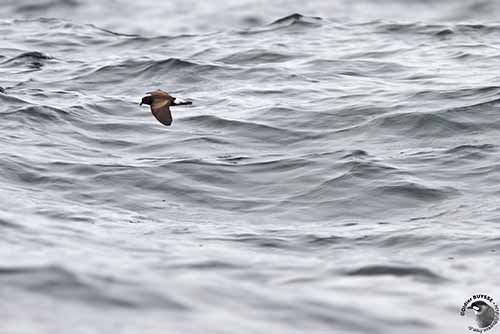
BEHAVIOUR IN THE WILD:
The Wedge-rumped Storm Petrel feeds on small fish, squid and crustaceans, usually caught while flying low from the surface. It also performs pattering, almost walking on the water, dipping and surface-seizing. It catches preys while sitting on the water too.
They usually feed at night, flying low over the waves with dangling legs. The prey is taken while only the head of the bird comes into contact with the water. The pattering could attract or frighten the preys, making them easier to detect.
During the breeding season, the Wedge-rumped Storm Petrel can be seen around land in day light. Usually, storm petrels visit the colonies at night to avoid the predators. But this one is the only species of the family Hydrobatidae to come to land by day.
However, the race “kelsalli”, the Peruvian race, visits its breeding colonies in total darkness.
As the main predator of this species is the Short-eared Owl which hunts night and day on Galapagos Islands, this deviation is still unexplained.
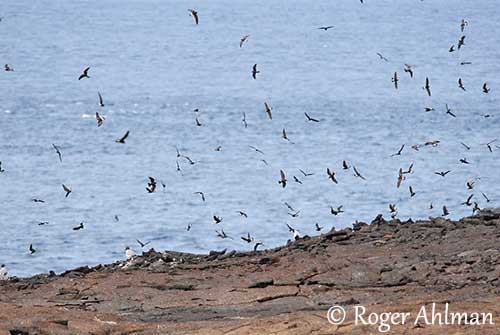
When threatened, the Wedge-rumped Storm Petrel ejects the contents of its stomach onto the predator or the intruder. However, this behaviour does not affect the predators able to capture a bird in flight.
The storm petrels are highly vulnerable to predation as they emerge from their burrows. Skuas and owls typically use these moments to catch them.
The courtship displays involve two or more birds engaging in aerial pursuits. They fly fast in circles above the nest-site while calling loudly. These movements display the conspicuous white rump patch.
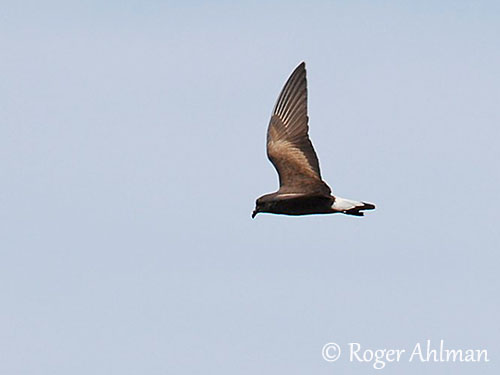
The pair tends to use the same nests-site every year. Both mates perform mutual preening, bill-touching and calling inside the nest. They usually pair for life.
The Wedge-rumped Storm Petrel may remain all year round in Galapagos Islands, but most of them disperse by following the Humboldt Current, as the race Kelsalli does too.
It has swift and direct flight, and usually flies high above water. It performs deep wingbeats, often twisting and banking.
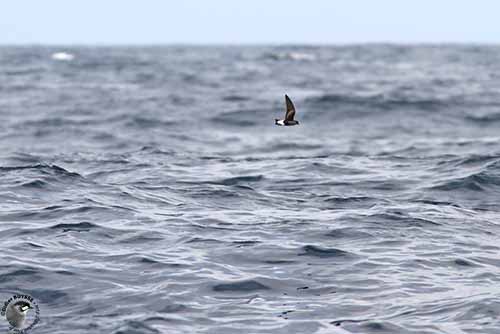
REPRODUCTION OF THIS SPECIES:
The peak of laying occurs mainly in May-June.
The Wedge-rumped Storm Petrel is colonial. The nest is placed in rock crevice or in burrow under the low vegetation.
The female lays a single white egg. Both parents share the incubation during 40-42 days, in stints of 5 days. The chick is fed by both adults. It fledges about 75 days after hatching.
They are vulnerable to predation in Galapagos, due to their diurnal habits.
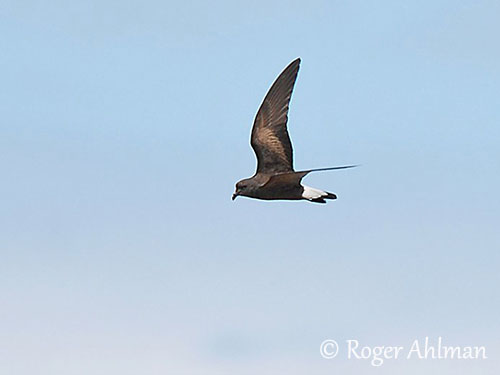
PROTECTION / THREATS / STATUS:
The Wedge-rumped Storm Petrel is threatened by predation in Galapagos, but it has large range outside the breeding season. The population size is very large, at least 500,000 individuals. In spite of regular decline, this species is not currently threatened.
